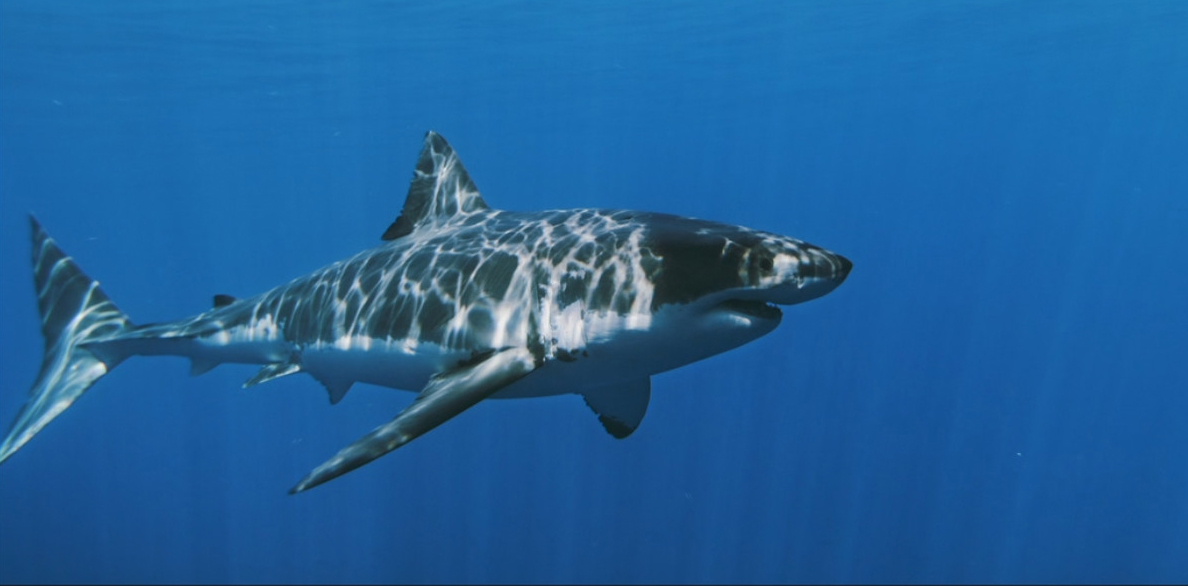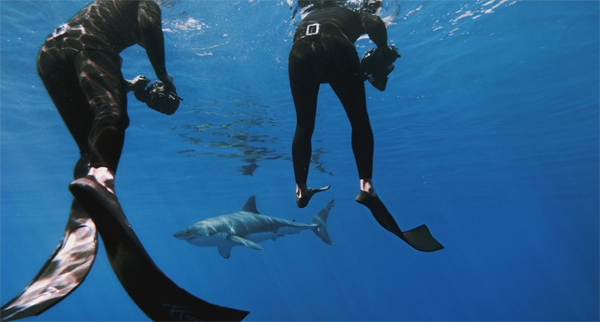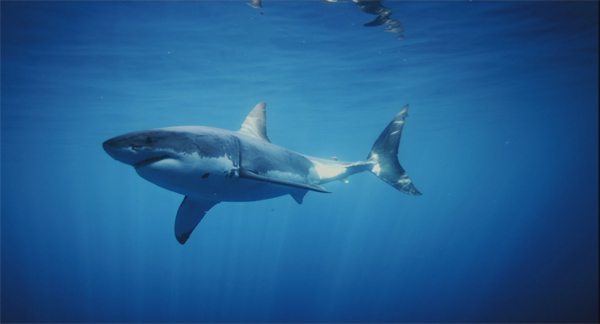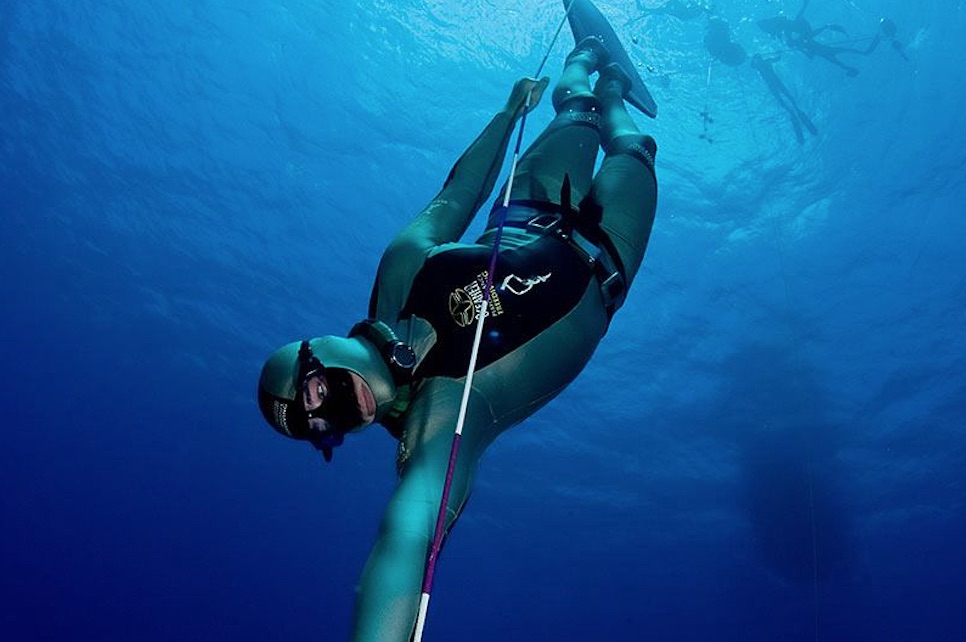There are two things that set Great White Shark apart from all other shark documentaries. The first is that it’s projected against a domed OMNIMAX screen at the Ontario Science Centre, which is so large and angled above that it encompasses all of your peripheral vision and gives you the feeling that you’re swimming in the ocean. The second is that it’s filmed by freedivers, a trio of men willing to slip below the surface and meet the ocean’s predators armed with nothing more than a deep breath. No cage, no chainmail suit, no oxygen tank.
The last part is pretty remarkable. It turns out that the great whites in Guadalupe, Mexico have learned to recognize fishing boats. You don’t have to actually be fishing, just have a boat that matches the silhouette of the type commonly used and the sharks will come out to be nosy, just in case you might be fishing and catch something they can steal.
This means that you can attract sharks without chumming the waters and as long as you don’t bait them or do anything disruptive you can catch them in a fairly casual mood. By leaving the oxygen tanks at home, freedivers can swim quietly without making bubbles and so long as they watch their body language and form a defensive triangle, can present themselves as objects of curiosity instead of potential prey.
The footage is amazing. The sharks take their time as they move, giving you a proper display of their physique and dexterity, so much that it’s quietly mesmerizing. They hang there in the water, so heavy and strong like submarines, and move with an eerie glide that’s captivating. The camera is given the chance to really follow the line of their bodies, to take their measure, and show off details like the way their bodies flange out towards the tail.
A domed or curved movie screen can have quite an effect. It pushes the screen closer at your peripheral vision where you’re more sensitive to movement, and creates a concave illusion where your brain actually sees details in the centre of the screen as being closer. You can make out every crag and pitt and scar and bite mark on the Great Whites in ways I’ve never seen before, giving the animals a facial topography that’s just as interesting as the lines in a dustbowl farmer’s face or the broken features of a career criminal. They get those bites from others sharks, from mating and working out their social hierarchy where the winners get to assert themselves and swim slightly above the rest.
Francois LeDuc, one of the divers in the film, spoke to me about spending entire days in the water, of encountering large female sharks who were very gentle and pesky teen-aged male sharks who took nips at them and acted out in rebellious ways. He says the great whites were quick to size him and the other divers up, to map out their field of vision, to learn their body language and even work out to a degree what he was thinking.
“You can’t afford to be nervous or anxious underwater with these animals,” he tells me, “’cuz they’ll sense that. If you act like prey you’re going to end up like a prey, so you need to be calm, relaxed, and just enjoy the interaction”.
The reason LeDuc and his colleagues worked out this risky approach was to find a better way to GPS tag great whites, which is difficult and messy to do at the surface from a boat. Early use of GPS tags have revealed that great whites roam farther than ever thought and will even dive sometimes to 4,000 feet. The tags they’re using will last for ten years, about two-thirds of the shark’s lifetime which will hopefully unlock new secrets about what they do when out of sight.
Bill Nighy is the perfect choice as narrator. As the man who brought to life the tentacled Davy Jones of the Pirates of the Caribbean movies, he has a wonderful way of wrapping his voice around words likes “monster” and “predator” while striking the thoughtful and intelligent tone needed for this kind of film.
There was a time when we saw land predators like bears and tigers as out-of-control monsters that attack on sight, but today celebrate them as graceful hunters, equally fascinating on the prowl or stretching and yawning in repose. With its hypnotically beautiful sequences, Great White Shark reveals that the ocean’s hunters are no different and we’ve simply been far too clumsy in our efforts to get to know them.






